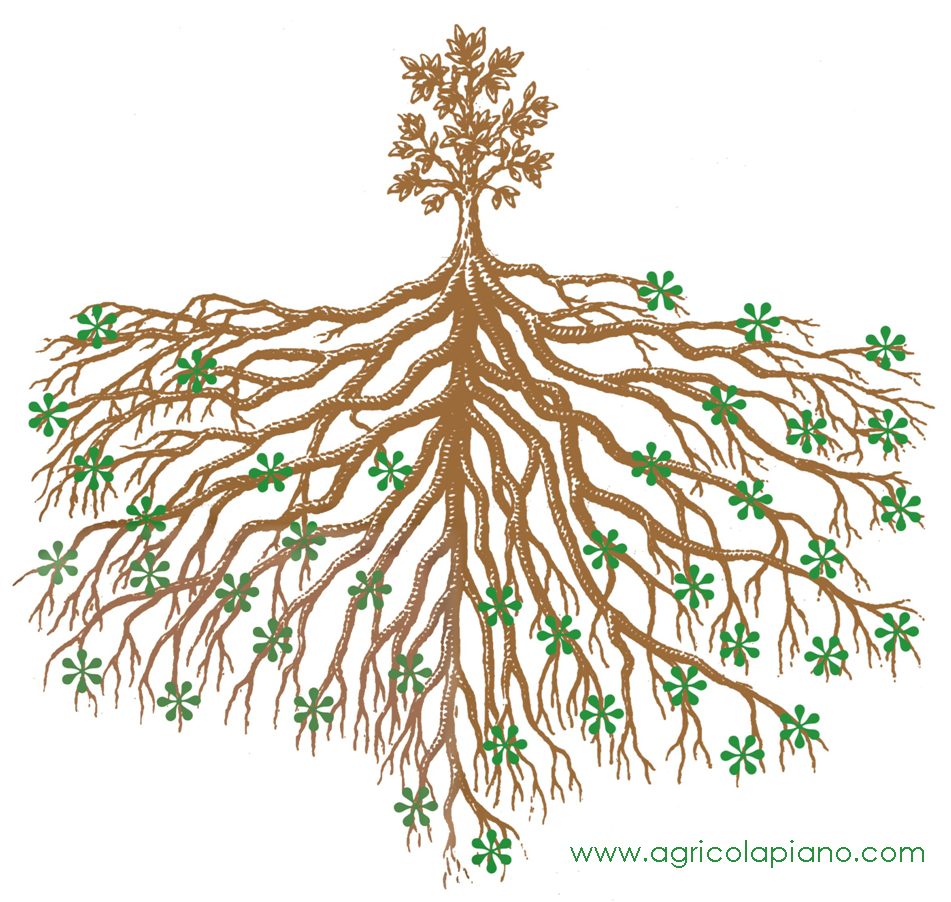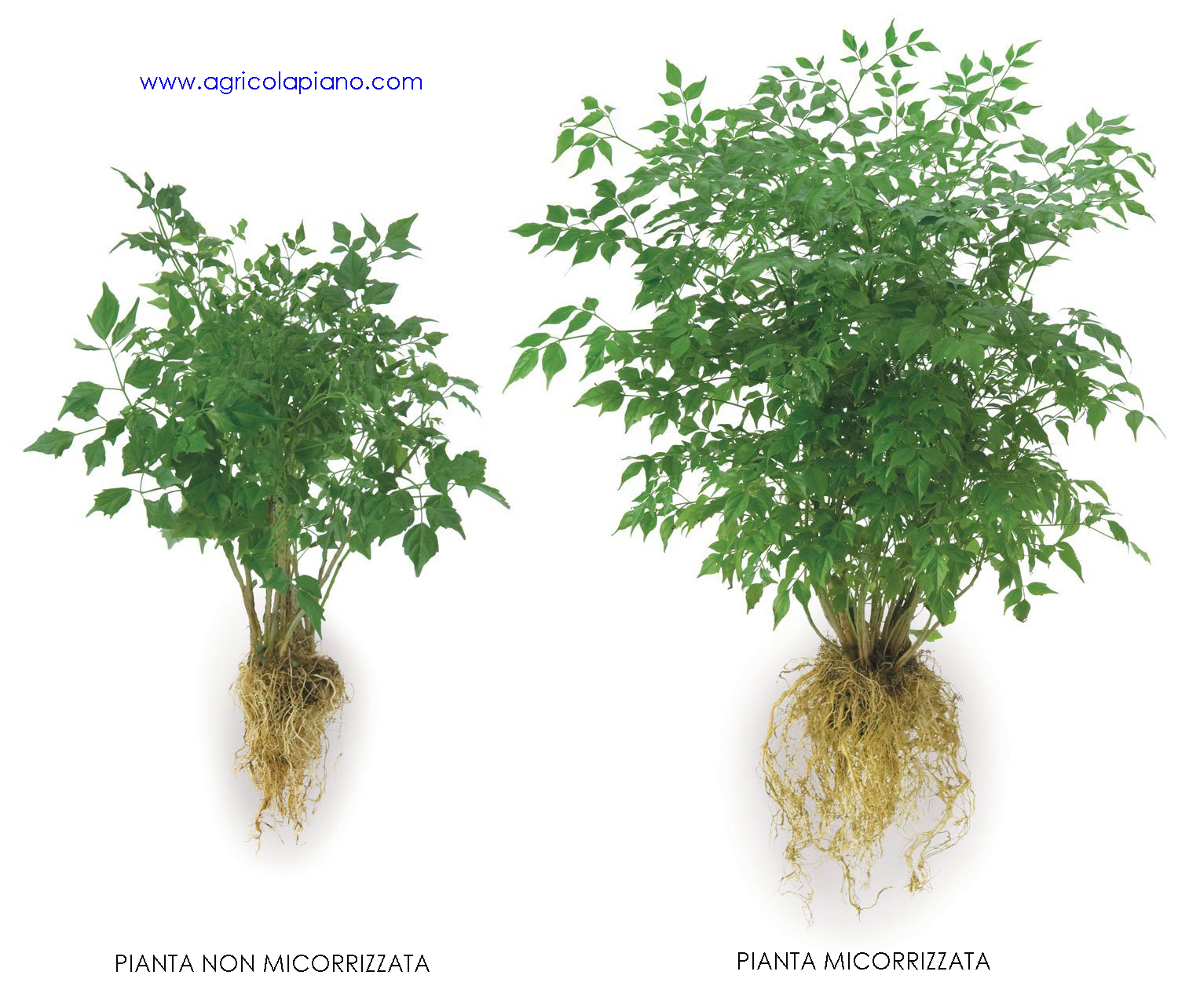What is mycorrhization?
Mycorrhization is a cultivation technique that consists of attaching non-pathogenic fungi to the plant’s root system, creating a symbiotic situation with the plant, whereby the two organisms carry on their life cycle, living in close contact and deriving mutual benefits, both nutritional and otherwise.
The fungus takes nutrients from the plant’s root system, while the plant receives water and minerals from the fungus to help it grow.
This symbiotic plant-fungus complex that is created is called mycorrhiza.
In nature, almost every plant, perpetuating ancient symbioses, is colonised by mycorrhizae, i.e. almost every plant has certain types of fungi around or in its roots, which allow it to live better and draw nourishment from the soil more easily.
But the immoderate use of chemicals in agriculture has led to soil fatigue due to the impoverishment of useful microflora.
Why does our company use mycorrhization?
Because it benefits the soil and the roots:
- Plant roots colonised by mycorrhizae are more extensive and have an estimated 700% greater capacity to explore the surrounding soil, the rhizosphere, than a non-mycorrhized root system;
- The consequence of this colonisation and exploration of the soil is an improvement, because it is greater, in the capacity to absorb nutrients. The mycorrhizae absorb carbohydrates from the root and release mineral salts (macro and micro elements) and organic compounds to the plant ;
- Mycorrhizae act as a natural filter and intervene in the nitrogen cycle by reducing the amount of nitrites and nitrates in the plant;
- After the colonisation of the roots, the web developed by the mycorrhizae, calculated at about 20 quintals of organic matter, reduces the effects of stress due to both water shortage;
- The mycorrhiza root symbiosis leads to a reduction in fertilisation due to the hyphae’s ability to search the soil for nutrients, particularly phosphorus;
- Resistance, although not total as a mechanical effect, to pathogenic fungi and nematodes.
- It allows us to recover and enhance the ancient compositions of our soils, when they were not yet contaminated by chemicals that destroyed their microbiological consortia;
- Mycorrhizae stimulate the production of aromatic substances.
Because it produces benefits for the plant and the fruit:
The nutrients supplied to the plant, as well as the organic and hormonal substances, have the effect of improving the plant’s vegetative state, and a starter effect can be seen in the first few weeks;
- The improved vigour of the plant, better resistance to stress, better absorption of macro- and microelements, have the effect of improving production in quantity and quality;
Because it makes our products healthier:
Every year 130 million people suffer from food-related illnesses.
The pollutants potentially most dangerous to human health are: agrochemicals, polychlorinated biphenyls, aromatic hydrocarbons, dioxins, heavy metals, nitrates and nitrites;
- Mycorrhizae act as a filter for these pollutants and do not allow them to enter the plant;
- Products with greater antioxidant powers are obtained, natural filters for toxins and carcinogens.
Unique Experience of Flavor and Health! Buy now our èViva flours and semolina, made with grain enriched through mycorrhization. Nourish your body with the best of nature.
🌾 Click here to buy and discover the èViva difference!


